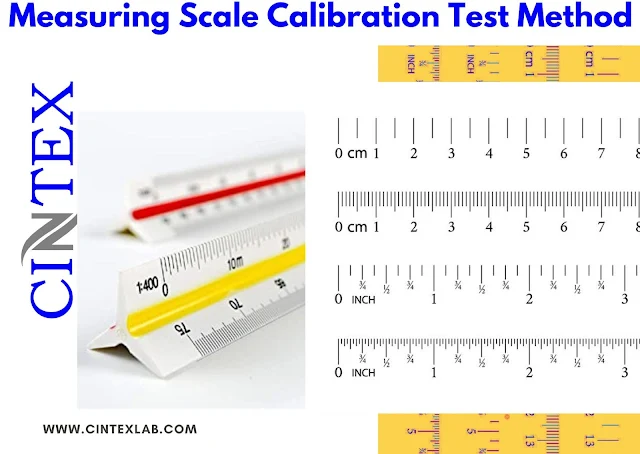Measuring Scale Calibration Test Method Process
Introduction:
Measuring scales are essential tools for many industries, including manufacturing, food and beverage, pharmaceuticals, and logistics. These scales are used to weigh raw materials, finished products, and packaging materials to ensure product quality, safety, and compliance with legal and regulatory requirements. However, the accuracy and reliability of these scales can be affected by several factors, such as wear and tear, environmental conditions, and operator error. To ensure accurate and consistent weight measurements, measuring scales must be calibrated regularly using appropriate calibration test methods.
In this article, we will discuss the measuring scale calibration test method process, including the importance of calibration, preparation for calibration, calibration test methods, and calibration results analysis.
The Importance of Calibration:
Calibration is a process of verifying the accuracy and performance of measuring scales. Proper calibration helps to ensure that the scale's readings are accurate, reliable, and consistent. Calibration also helps to identify any deviations from the standard measurement, which can indicate a problem with the scale's components or environment.
Measuring scales that are not calibrated or improperly calibrated can result in errors that can have serious consequences. For example, inaccurate weight measurements can lead to production defects, over or underfilled products, incorrect dosage of medication, and legal and regulatory violations. Additionally, improper calibration can lead to wasted materials, decreased productivity, and customer dissatisfaction.
Preparation for Calibration:
Before beginning the calibration process, it is essential to prepare the measuring scale and the calibration equipment. The following are the steps to prepare for calibration:
Clean the measuring scale: Dirt, dust, and debris can affect the accuracy of the scale's readings. Before calibration, clean the scale with a damp cloth and ensure that there are no visible residues.
Ensure the scale is leveled: A leveled scale ensures that the weight is distributed evenly, and the readings are accurate. Use a spirit level to check if the scale is leveled. If the scale is not level, adjust the feet or leveling screws to ensure that the scale is stable and level.
Check the power source: Ensure that the measuring scale is connected to a stable power source and is functioning correctly.
Check the calibration equipment: Ensure that the calibration equipment, such as weights and load cells, are clean, free from damage, and calibrated. Use weights that are traceable to national or international standards.
Calibration Test Methods:
There are several calibration test methods used to verify the accuracy and performance of measuring scales. The following are some of the most common calibration test methods:
- Dead Weight Calibration: Deadweight calibration involves using calibrated weights to verify the scale's accuracy. This method is considered the most accurate calibration method and is typically used for high-precision scales, such as analytical scales. The weights used in this method are traceable to national or international standards, ensuring that the calibration results are accurate and reliable.
The dead weight calibration test method involves the following steps:
a. Set up the calibrated weights on the scale, starting from the lowest weight to the highest weight.
b. Record the readings for each weight and compare them to the expected values.
c. If the readings are within the tolerance range, the scale is calibrated. If the readings are outside the tolerance range, the scale needs adjustment.
- Comparison Calibration: Comparison calibration involves comparing the scale's readings with the readings from a reference scale. The reference scale is calibrated using a standard weight, and the scale being calibrated is adjusted until the readings match. This method is commonly used for bench scales and floor scales.
The comparison calibration test method involves the following steps:
a. Set up the reference scale and the scale being calibrated side by side.
b. Place a standard weight on the reference scale and record the readings.
c. Place the same weight on the scale being calibrated and adjust the scale until the readings match the readings from the reference scale.
d. Repeat the process for different weights to ensure that the scale is calibrated across its full range.
- Corner Load Calibration: Corner load calibration involves placing calibrated weights on the corners of the scale to verify its accuracy. This method is commonly used for floor scales and large platform scales.
The corner load calibration test method involves the following steps:
a. Set up the calibrated weights on the four corners of the scale.
b. Record the readings for each corner and compare them to the expected values.
c. If the readings are within the tolerance range, the scale is calibrated. If the readings are outside the tolerance range, the scale needs adjustment.
- Eccentric Load Calibration: Eccentric load calibration involves placing calibrated weights at different locations on the scale to verify their accuracy. This method is commonly used for dynamic weighing systems and check weighers.
The eccentric load calibration test method involves the following steps:
a. Place the calibrated weights at different locations on the scale.
b. Record the readings for each location and compare them to the expected values.
c. If the readings are within the tolerance range, the scale is calibrated. If the readings are outside the tolerance range, the scale needs adjustment.
Calibration Results Analysis:
After completing the calibration test methods, it is essential to analyze the calibration results to determine the scale's accuracy and identify any issues. The following are the steps to analyze the calibration results:
Compare the readings: Compare the readings from the calibration test methods with the expected values to determine the scale's accuracy. If the readings are within the tolerance range, the scale is calibrated. If the readings are outside the tolerance range, the scale needs adjustment.
Identify the cause of deviation: If the readings are outside the tolerance range, it is essential to identify the cause of deviation. The cause of deviation can be due to several factors, such as environmental conditions, component wear, and operator error.
Take corrective actions: Based on the cause of the deviation, take corrective actions to adjust the scale, replace worn components, or train operators to prevent future deviations.
Document the results: Document the calibration results, including the calibration test methods used, the readings obtained, the expected values, and any corrective actions taken. This documentation is essential for traceability, quality control, and regulatory compliance.
Conclusion:
Measuring scale calibration is a critical process that ensures accurate and reliable weight measurements. Proper preparation for calibration, appropriate calibration test methods, and calibration results analysis are essential for ensuring accurate calibration and identifying any issues. Regular calibration and maintenance of measuring scales help to prevent production defects, legal and regulatory violations, and customer dissatisfaction.
Visit: Cintex Calibration







